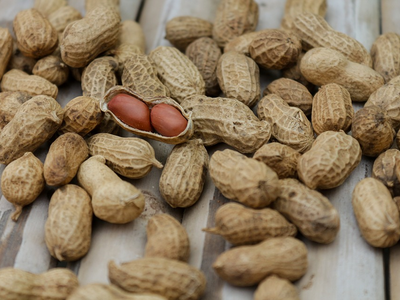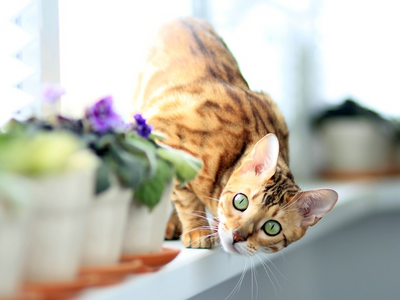14.03.2022
Calculating the ideal weight for your feline starts with this personalised cat weight chart by age
There’s no denying pudgy cats are the cutest creatures to roam this Earth, but all that extra weight can take a toll on their health. If your feline friend’s tummy is “rounder than round,” it’s probably time for a diet! But how do you set the goal weight for your pet? You don’t want to go overboard with food restrictions and end up accidentally starving them!
One way to determine whether your cat should shed a few pounds is to compare their current weight to the average weight for their age group. Let’s examine a cat weight chart arranged by age and see what other factors you should consider when weighing your pet. We’ll also provide weight loss tips for felines and help you choose tailor-made meals for your roly-poly cat!
What is the average weight for adult cats?

Your cat’s breed is an important factor in calculating their ideal body weight.
Source: Lana Vidnova
Indoor cats tend to weigh more than their outdoor cousins because of the differences in lifestyle and eating habits. In the wild, felines hunt for food and eat freshly slaughtered prey, while house cats are weighted on hand and foot by their loving human companions. Sure, they’ll snag a house mouse from time to time, but their diet mostly comprises cat food and treats.
A feline’s weight is also affected by their:
- Life stage
- Breed
- Specific physical condition
- Sterilisation status
Your cat’s weight should stabilise once they’re fully grown, i.e. at around one year old. If they eat well-balanced meals and get enough exercise, they shouldn’t experience drastic fluctuations until they reach the golden age and their metabolism slows down.
The average weight for adult cats is listed in the table below:
|
Year |
Average weight in kilograms |
|
One |
3.6 kg |
|
Two |
4.1 kg |
|
Three |
4.9 kg |
|
Four to five |
5.1 kg |
|
Six to seven |
5.6 kg |
If your cat doesn’t fit into these parameters, it doesn’t necessarily mean they’re overweight. Some breeds have a naturally large frame and tend to be heavier. Adult male Maine Coons can weigh up to ten kilos (almost twice the size of a Persian or Siamese cat) and be perfectly healthy! Other large cat breeds popular in the UK include Bengals, Ragdolls, and British Shorthairs.
Whether your cat is pregnant or nursing will naturally affect their weight but not in the way you think. Because they’re providing sustenance for the entire litter, pregnant queens can sometimes develop nutritional deficiencies and start losing weight after giving birth. That’s why vets recommend food supplements to accommodate their increased nutritional needs.
One of the common aftermaths of sterilisation is rapid weight gain. Neutered and spayed cats often experience bouts of hunger, so some dietary changes are necessary. If you don’t tweak your pet’s meal plan and start controlling their portions, you open the door to feline obesity and the accompanying health risks.
What is the average weight for kittens?
Keeping track of your kitten’s weight is an excellent way to monitor their overall progress. It’s also an indicator of the strengths and shortcomings of your chosen kitty diet. If you get the perfect ratio of proteins, fats, and calcium, your baby cat shouldn’t experience any developmental problems unless they’re genetic.
In the first few weeks after birth, a kitten’s appetite and nutritional needs are super high. It’s perfectly normal for nursing kitties to gain around seven to ten grams per day. Once their baby teeth emerge and they start eating solids, their weight will stabilise. They should reach 80% of their expected size at eight weeks, depending on the breed.
Until they are fully mature (at around 12 months), kittens experience fluctuations in their body weight. You can check out the approximate weight development timeline in the table below:
|
Month |
Average weight in kilograms |
|
One |
0.4–0.8 kg |
|
Two to three |
1.3–1.8 kg |
|
Four to six |
1.9 kg |
|
Seven to eight |
2 kg |
|
Nine to ten |
2.1 kg |
|
11 to 12 |
2.2 kg |
Keep in mind that, besides breed, your kitten’s gender also affects their weight. Male cats tend to gain weight faster than females, particularly during puberty (between six to eight months old).
Average weight for newborn kittens by week

It’s essential to keep track of your kitten’s weight in the first few weeks!
Source: Amy Baugess
The weight of a newborn kitten is typically around 2% of their mother’s weight, which adds up to 100 grams (or one Crunch bar), depending on the size of the litter. In the following weeks, nursing kittens will start to gain weight rapidly thanks to the nutrients they get from breast milk. Take a look at the projected weight development for weeks one to eight in the table below:
|
Week |
Weight in grams |
|
First week |
50–150 gr |
|
Second week |
150–250 gr |
|
Third week |
250–350 gr |
|
Fourth week |
350–450 gr |
|
Fifth week |
450–550 gr |
|
Sixth, seventh, and eighth week |
550–900 gr |
If you have a foster kitten, it’s your responsibility to provide them with enough sustenance to grow at a desirable rate. You should:
- Use a kitten replacer formula (KMR) instead of milk
- Feed them approximately every two hours in the first three to four weeks
Giving regular milk for human consumption can induce diarrhoea, vomiting, and other gastrointestinal issues. Almost all cats are lactose intolerant, meaning they can’t digest dairy—besides yoghurt or particular custom-made products such as Fromage du Chat. A milk replacer formula is carefully designed to satiate the kitten’s nutritional and energetic requirements, which is why it’s superior to lactose-free milk or any vegan alternatives (e.g. soya milk).
How much you feed your kitten also depends on their weight. You shouldn’t give baby cats more than 2 ml of KMR for every 50 grams of their weight, or they can experience indigestion. Kitties have sensitive, tiny stomachs that can’t process huge amounts of food. Their delicate tummies are also why they sometimes can’t digest adult cat food and require specially formulated products instead.
The proper way to weigh kittens
Until your kitten reaches their final body weight, make sure to measure them regularly. Not only is their weight important for portion control, but it’s also indicative of their overall health.
Ideally, you should weigh your kitten at least twice per day around the same time. Precision is crucial, so make sure to:
- Use an adequate scale—Bathroom scales won’t be able to register your featherweight feline. It’s better to use a kitchen scale and a plastic bowl. Place your kitten in the container and put it atop the scale
- Prevent them from moving around—Kittens are tiny energy bombs, and expecting them to sit still is too much! To keep them immobile, wrap your baby cat in a small towel or a sock before measuring. The best solution would be to weigh them when they’re fast asleep
- Make a note of each result—Keep records of your kitten’s daily weighings in a journal. It’ll help you notice if anything’s wrong, e.g. if they’re stagnating or starting to lose weight
If your kitten isn’t reaching the weekly goal, schedule a visit to the vet. There could be several underlying reasons for weight loss, from a hereditary condition to parasitic infection.
What type of food promotes natural weight management in cats?
The ideal kitty meal is rich in:
- Water
- Animal protein (amino acids, especially taurine)
- Animal fat (omega-3 and omega-6 fatty acids)
- Bioavailable vitamins and minerals
A diet resembling the feline natural feeding pattern will sustain their metabolism and keep their weight in check. While achieving the recommended nutrient ratio in home cooking is possible, commercially sold cat food is a more practical solution.
High quality semi-moist and wet cat food is manufactured to nourish your cat’s body. Unlike kibble, wet food is highly moisturising with an average of 78% water content. It also contains fewer carbohydrates, which are the number one cause of obesity and are hard on your cat’s stomach.
With a wet-food-only diet, your pet should be able to maintain a healthy weight.
If you’re looking for the perfect diet for your pudgy pawster, try Untamed! Our delicious recipes are:
- Packed with protein
- Made with human-grade meat
- Vet-formulated and allergen-free
- Ethically produced
- Fussy eater approved
All our meals are gently steamed to preserve the nutritional value of the ingredients and secure your cat’s health. We don’t use grains or other fillers to add bulk to our products—we rely on the bioavailable nutrients in meat to satiate your cat’s hunger! Our high-protein diet will keep your pet full while supporting healthy metabolic functions and natural weight management.

It’s all about lean proteins!
Image (C) Untamed
Why join the Untamed clowder?
Each Untamed meal is carefully designed to cater to your cat’s carnivorous nature. We only use premium meat cuts in our recipes, including:
- Chicken breast and liver
- Duck breast
- Salmon fillet
- Tuna steak
- Sardine and mackerel fillet
You’ll be able to see the effect of our feline cuisine after the first serving! Besides being utterly irresistible, Untamed products can significantly improve your pet’s quality of life. The long-term health benefits of our human-grade cat food are listed in the table below:
|
Timeline |
Health benefits |
|
Within a week |
|
|
After two months |
|
|
Within four months |
|
|
Life-long benefits |
|
Take the Untamed online quiz to design a custom menu for your pet’s specific requirements! We offer various nutrient-dense, low-calorie feline specialities, including:
- Tuck-in Tuna in Jelly—Tasty tuna steak from dolphin-safe suppliers simmered in jelly and some hearty fish broth for the yummiest effect
- Chocka Chicken in Jelly—Tender chicken breasts dipped in light jelly, ideal for felines with sensitive tummies
- Chocka Chicken with Duck in Jelly—A tantalising poultry platter, chicken breast spiced up with duck meat, served in jelly
- Tuck-in Tuna with Salmon in Jelly—Delicious tuna steak pieces cooked in jelly and tweaked with salmon for seafood lovers
- Chocka Chicken in Gravy—An ideal meal for sensitive felines, made with shredded chicken breast softened in natural gravy

Tuck in your cat’s tummy with Untamed’s Tuck-in Tuna—a nourishing gravy recipe made with whole meat tuna and free of fillers, additives, and unhealthy fats!
Image (c) Untamed
How do I become a member of the Untamed community?
Joining the Untamed clowder is easy! Kickstart your kitty’s taste adventure by ordering a cat food trial pack online. All you have to do is:
- Visit our Try Now page
- Let us know about your cat’s food preferences, life stage, and allergies
- Pick a meal plan and place the order
We'll deliver your personalised meal box within a day, with no additional shipping fees! Once your cat tries our dishes, you'll start receiving monthly deliveries of delicious Untamed food.
Want to make changes to your order? It's easy—go to your account and tweak your cat food subscription to suit your needs.
Is raw food better for weight management?
The so-called B.A.R.F. (bones and raw food) regimen is hailed as the closest to the natural feline diet. B.A.R.F. advocates claim it can help with several health issues in domestic felines, most importantly obesity and diabetes.
While raw meat and bones would be your cat’s number one nutrient source in the wild, it’s not the best food choice for domesticated felines. Undercooked or uncooked meat is full of microbial pathogens that can cause severe health issues or even death.
Other raw ingredients, such as raw eggs and unpasteurised milk, also contain dangerous bacteria, mainly salmonella, listeria, and E. coli. Cats can ingest the bacteria either through consumption or cross-contamination and spread it to the rest of the household.
The infection usually develops in the first 12–72 hours and entails the following symptoms:
- High fever
- Vomiting
- Dehydration
- Diarrhoea or bloody stool
- Lethargy
- Appetite loss
At the first sign of a bacterial or parasitic infection, contact your vet immediately. They’ll need to perform a series of lab tests, including blood work and urine and faecal analysis, to determine the exact treatment. Your cat will most likely be put on a highly restrictive diet until their body fully recovers from the infection.
What is the body condition score (BCS)?
Besides using a cat weight calculator, you can rely on the body condition score to confirm whether your pet needs to lose a few pounds. All you have to do is feel your cat’s ribs, spine, and tummy with your hands and see where they land on the BCS chart.
The categories are as follows:
- Severely malnourished—All the bones are sticking out, and the cat’s tummy is entirely tucked in. Muscle atrophy is also present
- Underweight—The cat’s ribs, backbone, and pelvis are visible and palpable. The belly is tucked in, and the waistline is accentuated
- Ideal weight—Ribs, backbone, and pelvis are covered with a thin layer of muscle and fat. The tummy is subtly tucked in, and the waistline has a slight curve
- Overweight—The bones are barely palpable under a layer of heavy fat. The waistline isn’t entirely visible, and the tummy is rounded
- Obese—None of the bones is visible nor palpable, hidden under a layer of thick fat. The tummy is low and flappy. All four limbs and pelvis are also covered with fat deposits
How to help your cat lose weight

Well, I don’t think I need to lose weight. In fact, the ladies find my chubby cheeks adorable!
Source: Eduard Delputte
If your cat has piled some extra pounds, here’s what you can do to help them lose weight:
- Reduce their calorie intake—Instead of feeding them biscuits, typically loaded with carbs, switch to a wet-food-only diet. If they’re being fussy about the change, you can make the transition easier by adding some kibble to their serving
- Go easy with the treats—Complementary food should only account for 10% of the feline diet. The type of treat you give them is also important. Bite-size, low-calorie fruit like strawberries, bananas, apples, and pumpkins can do the trick, but meat snacks are the best option. Opt for chicken, liver, tuna, salmon, prawns, etc. Keep in mind that some fruit and veggies (e.g. grapes and onions) are toxic to cats, so check with your vet first
- Don’t give them fatty meat—Fatty acids are beneficial to the feline metabolism, but saturated fat in pork and bacon can be harmful in the long run. It’s okay to let your cat have a bite of ham every once and a while, but try to avoid cured and processed meat altogether. Chicken and fish make for healthier protein sources
- Encourage them to exercise—Make room in your schedule to play with your cat. Use stimulative toys to prompt them to move. If your surroundings allow it, let them outside for a run
- Use a food puzzle—Food puzzles are an effective feeding method for overweight cats. Instead of mopping up the entire serving, your pudgy pet will have to work for their meal. You don’t have to buy an actual feeder. Make an improvised version using a muffin tray or a cardboard box
How to maintain a healthy weight in older cats
Senior cats (age ten and older) have a slower metabolism and are more sickly than kittens or adults. As your feline companion is nearing the twilight of their life, they can develop:
- Appetite loss
- Dental issues
- Thyroid dysfunction
- Digestive problems
- Chronic illness (e.g. diabetes and renal disease)
Frequent health issues can lead to unhealthy weight loss in older cats. As a result, their muscles can atrophy, their joints can become inflamed, and their fur will lose its shine.
Here’s what you can do to get your oldtimer to a healthy weight and improve their overall quality of life:
- Put them on a mixed diet of wet and dry cat food
- Give them multiple small servings instead of two large meals
- Don’t limit their access to food—use the free-feeding method
- Soften the kibble with soup or broth if they don’t have any teeth
- Remove sodium and phosphorus from their diet to preserve their kidneys
- Feed them vitamin supplements, but only if your vet recommends them
- Make sure their feeding bowl is always clean to prevent whisker fatigue

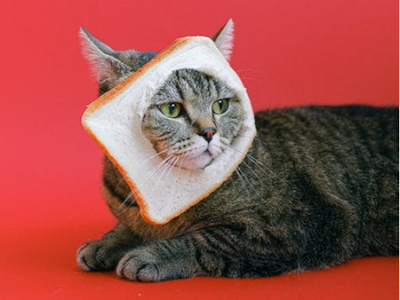
![Associated image for Best food for Ragdoll cats in the UK [Broken Down]](http://untamed.com/cdn/shop/articles/featured_best_food_for_ragdoll_cats_uk_400x300_crop_center.jpg?v=1646818249)
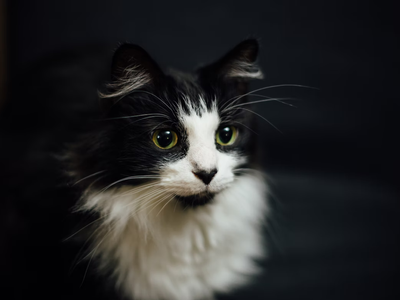
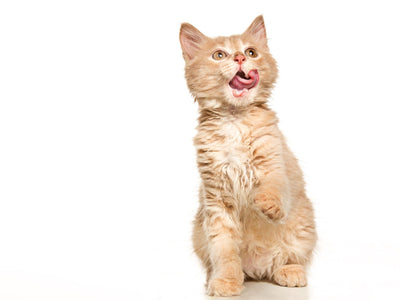
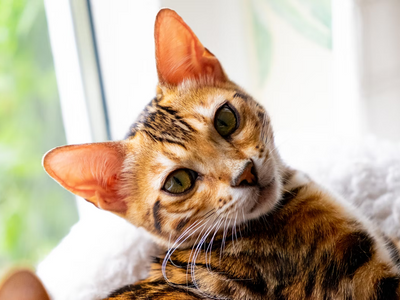
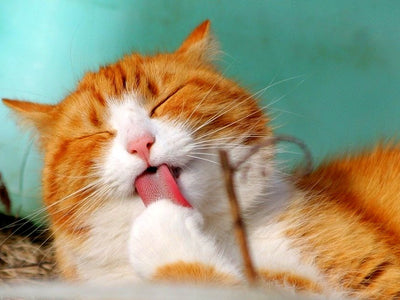
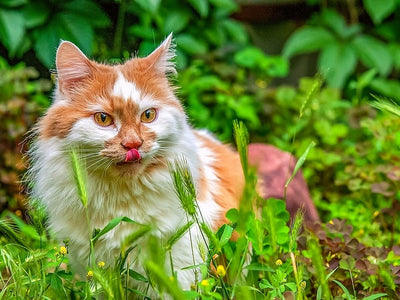
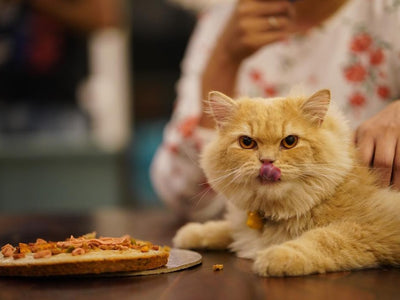
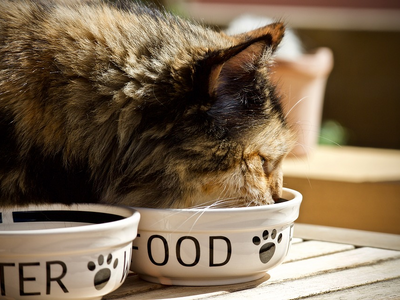
![Associated image for What human food can Sphynx cats eat? [Comprehensive list]](http://untamed.com/cdn/shop/articles/what_human_food_can_sphynx_cats_eat_Featured_400x300_crop_center.jpg?v=1648705074)
